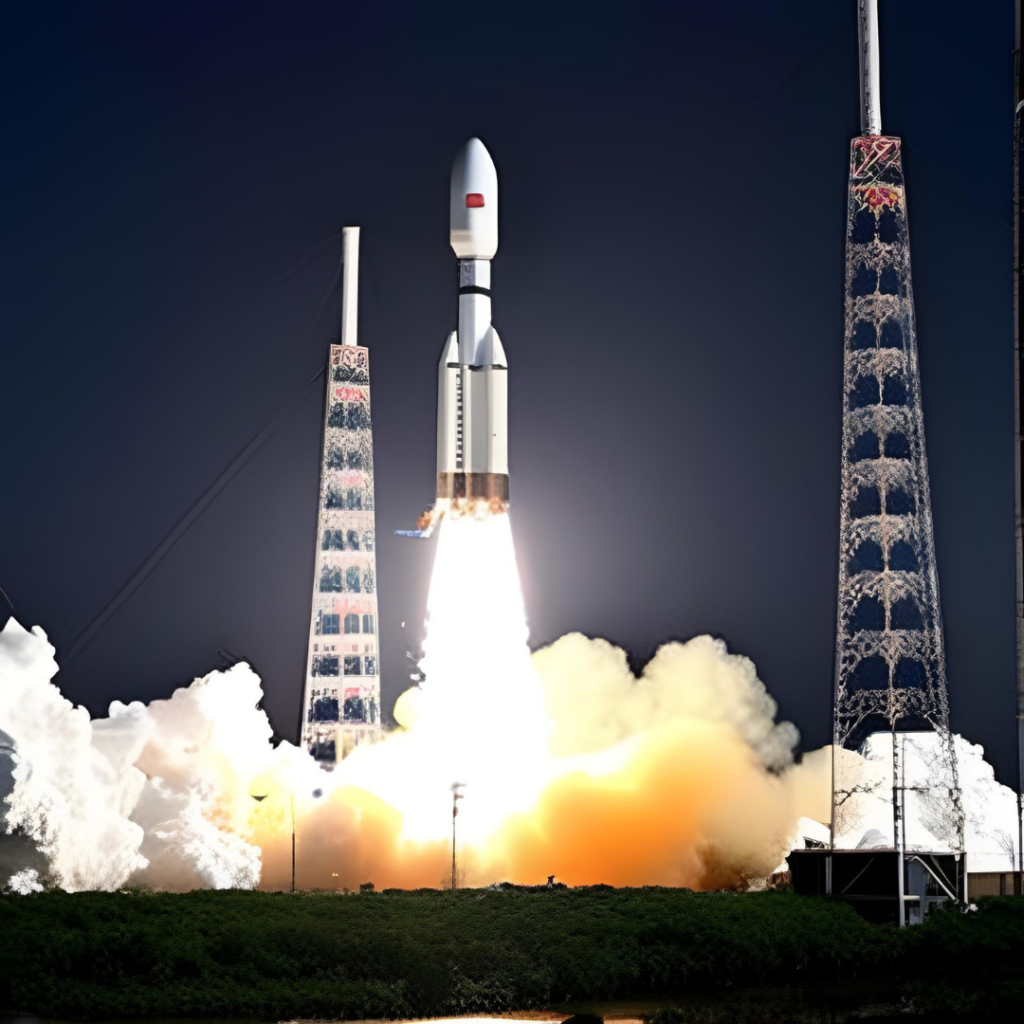India’s Ambitious Lunar Mission: Chandrayaan-3 Aims for Historic Success

On Wednesday, history might be in the making as India’s third lunar mission, Chandrayaan-3, is set to land on the Moon. If successful, this mission will mark a significant milestone, propelling India to the forefront of lunar exploration. The primary objective of Chandrayaan-3 is to achieve a soft landing near the Moon’s little-explored south pole, a feat that has never been accomplished before.
One of the key goals of this mission is to hunt for water-based ice, a discovery that could hold the key to human habitation on the Moon in the future. The presence of water on the Moon could revolutionize space travel and open doors for extended lunar missions and even potential colonization.
This endeavor comes shortly after Russia’s Luna-25’s unsuccessful landing attempt in the same region, adding to the pressure and excitement surrounding Chandrayaan-3’s mission. Success would position India as only the fourth country in the world to achieve a soft landing on the Moon, joining the ranks of the United States, the former Soviet Union, and China.
India’s journey to conquer the Moon’s south pole has been far from smooth. The country’s previous attempt, Chandrayaan-2 in 2019, ended in disappointment as the lander crashed into the lunar surface. All eyes are now on Chandrayaan-3, with hopes of rewriting history.
The spacecraft, comprising an orbiter, a lander, and a rover, launched on July 14 from the Sriharikota space center in southern India. The lander, named Vikram after the founder of the Indian Space Research Organisation (ISRO), Vikram Sarabhai, carries the rover Pragyaan (meaning “wisdom” in Sanskrit) within its belly.
The anticipation and enthusiasm surrounding India’s latest lunar mission are palpable across the nation. Well-wishes for the mission’s success have poured in from all corners of the country, reflecting the collective hope and pride associated with this endeavor.
ISRO has announced plans for a live telecast of the landing, expected to attract millions of viewers, including schoolchildren. Sreedhara Panicker Somanath, the chief of ISRO, exudes confidence in Chandrayaan-3’s success. Learning from the Chandrayaan-2 crash, ISRO conducted meticulous studies and simulations to rectify any glitches that could impede the mission’s success.
In the days leading up to the landing attempt, the Vikram lander’s camera diligently mapped the lunar surface, searching for a suitable landing spot. ISRO’s updates indicate that the mission is progressing as planned, with systems undergoing regular checks.
If successful, Chandrayaan-3 will not only build upon the achievements of India’s earlier lunar missions but also contribute to significant scientific discoveries. Chandrayaan-1, India’s first Moon mission in 2008, revealed the presence of water molecules on the lunar surface and the Moon’s daytime atmosphere. Despite Chandrayaan-2’s landing setback, its orbiter remains operational and continues to collect valuable data.
The lander and rover aboard Chandrayaan-3 are equipped with scientific instruments aimed at uncovering the Moon’s physical characteristics, surface properties, atmospheric conditions, and subsurface activities. Achieving a soft landing in the challenging and uneven terrain near the south pole will be a remarkable engineering feat.
Once the lander touches down and the dust settles, the rover will emerge to explore the lunar surface. It will collect essential data and images, transmitting them to the lander, which will relay the information to the orbiter for transmission back to Earth. The rover’s wheels, adorned with ISRO’s logo, will leave imprints on the lunar soil during its exploratory mission.
The landing date is strategically chosen to align with the start of a lunar day, ensuring sunlight availability for recharging the lander and rover batteries. However, the question remains whether they will revive when the next lunar day begins.
The Moon’s south pole holds immense promise, with its vast areas of permanent shadow potentially containing valuable water resources. As India’s mission takes center stage, the global interest in lunar exploration continues to grow. Many other missions are in the pipeline, driven by the quest to unravel the mysteries of the Moon, often considered a gateway to deeper space exploration.
As we eagerly await the outcome of Chandrayaan-3’s ambitious endeavor, it’s a testament to human ingenuity, determination, and the unending curiosity that propels us to explore the cosmos and redefine the boundaries of our knowledge.



